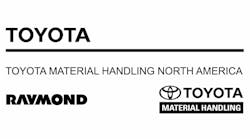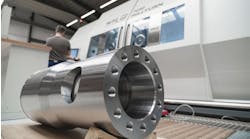Apart from current economic or political considerations, the continuing high rate of domestic unemployment is a lingering mystery with long-term implications that should matter to everyone, those who are employed as well as those who are not. Nothing remains hidden forever though, so even if the ongoing rate of unemployment is never explained logically its effects will be felt.
Let me start from this premise: amid all the economic disorder of the past four years, high unemployment is the only consistent factor. No one seems to agree why this is so. Unemployment rates no longer fall when labor supplies rise or labor costs fall. It barely changes despite considerable efforts to stimulate economic activity, and thereby to promote hiring.
The U.S. unemployment rate has not dropped below 7.7% since early 2009 — and that rate posted for February was characterized as good news (“… the lowest level since 2008,” according to CNN.) More recent reports are even less encouraging. By late March, new claims for unemployment benefits hit 385,000, a rise of 28,000 in just one month.
Also, there is information masked by the analysis of “initial claims,” such as data on labor-force participation, which measures the number of individuals who are not working and not seeking work, and thereby are not identified as “unemployed.” If labor-force participation had been consistent over the past year, the February unemployment rate would have been 8.3%. If it had remained consistent since early 2009, the current unemployment rate would be 10.8%.
Some of missing labor-force participants retired in the past four years, and others benefited from buyouts, or have found new employment. My sense however is that we have arrived a level of tolerance for unemployment, unofficially, of course.
This tolerance is recognizable in indirect ways. In 2012, corporate profits represented 12.4% of U.S. GDP, the highest rate such rate in almost 70 years. It’s difficult to conclude that employers are too strapped to hire workers. They just don’t feel the need.
When we conducted our 2013 Business Outlook survey of forging executives, we learned that a large majority (over 80%) of forgers expected their annual volumes of shipments to rise this year over 2012, but 54.4% of respondents indicated no increases in employment would take place this year.
It’s easy to conclude that employers are satisfied to keep employment levels as-is, thinking that will satisfy their objectives. But that has implications, too, such as …
The evidence of acceptance in the attitudes of workers. Employee compensation in 2012 was 54.6% of GDP, the lowest rate in over 50 years. Those who have jobs are willing to tolerate their current status.
Anecdotally, all of us have grown accustomed to added responsibilities on the job: manufacturing workers are expected to have cross-functional skills. They’ve accepted that they must be available to fill in outside their areas of operation, or after hours or on weekends and holidays. Clerical and managerial workers are accustomed now to completing work after closing, staying later or working at home, responding to messages on their wireless devices. They may not like it, but they accept it. They sense that even if things are not perfect, they may get worse. Why not? There are software programs to read information and schedule plans, controllers to make decisions, robots to lift and move material. As long as productivity is achieved, innovation is unnecessary. Just keep doing what you do.
Then, what? The consistency of the unemployment rate indicates one of two things will happen next: wider acceptance of the notion that productivity alone is sufficient — which would have further grim consequences; or the emergence of a new standard — call it performance — in which the reasons that we work are validated by the results of our work. We’re coming close to a model of perfect economic efficiency, if only we can find a role for ourselves within it.











